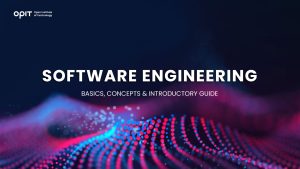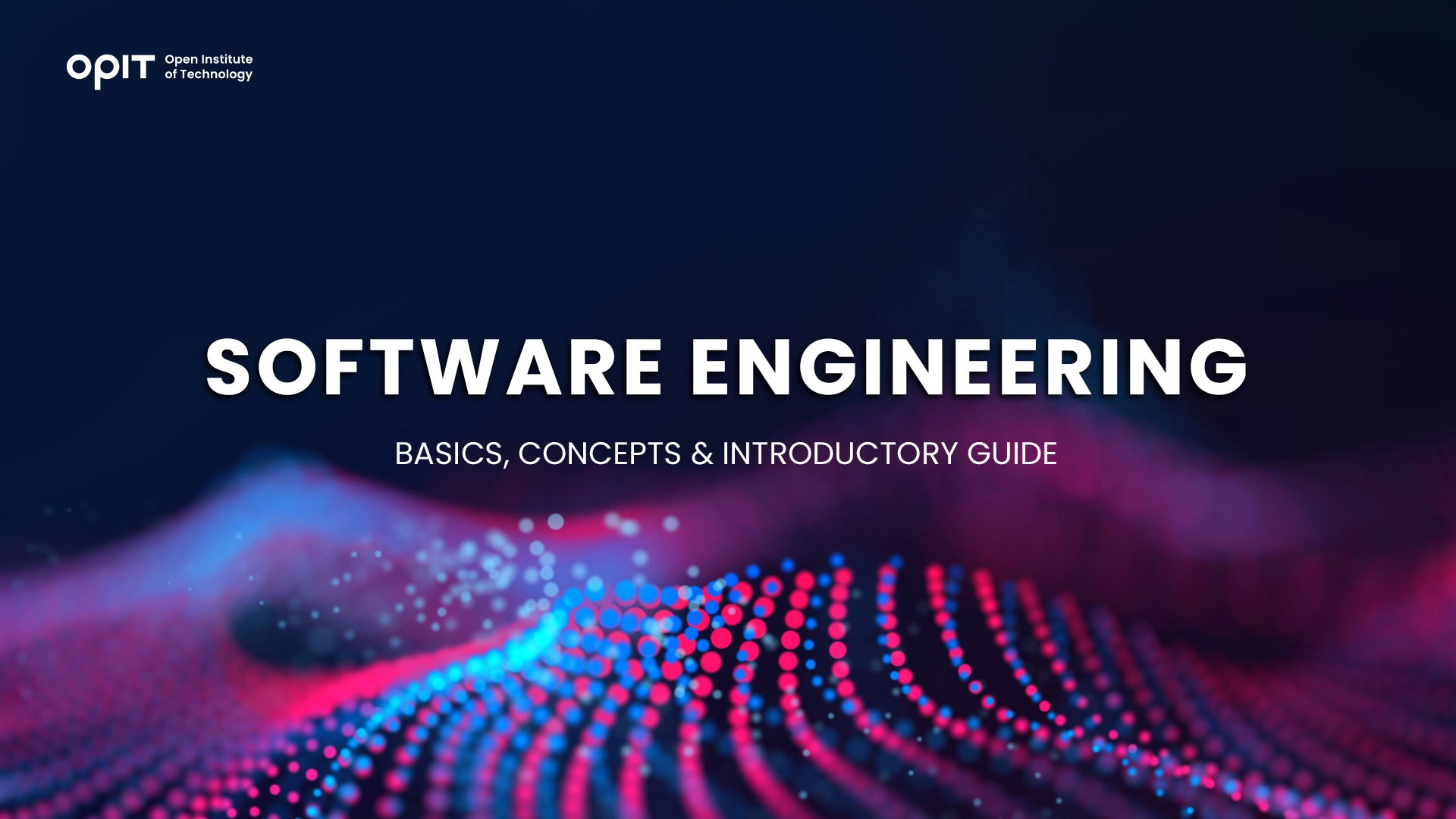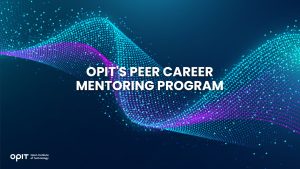

Software engineering tackles designing, testing, and maintaining software (programs). This branch involves many technologies and tools that assist in the process of creating programs for many different niches.
Here, we’ll provide an answer to the “What is software engineering?” question. We’ll also explain the key concepts related to it, the skills required to become a software engineer, and introduce you to career opportunities.
Basics of Software Engineering
History and Evolution of Software Engineering
Before digging into the nitty-gritty behind software engineering, let’s have a (very short) history lesson.
We can say that software engineering is relatively young compared to many other industries: it was “born” in 1963. Margaret Hamilton, an American computer scientist, was working on the software for the Apollo spacecraft. It was she who coined the term “software engineer” to describe her work at the time.
Two NATO software engineering conferences took place a few years later, confirming the industry’s significance and allowing it to find its place under the computer-science sun.
During the 1980s, software engineering was widely recognized in many countries and by various experts. Since then, the field has advanced immensely thanks to technological developments. It’s used in many spheres and offers a wide array of benefits.
Different Types of Software
What software does software engineering really tackle? You won’t be wrong if you say all software. But learning about the actual types can’t hurt:
- System software – This software powers a computer system. It gives life to computer hardware and represents the “breeding ground” for applications. The most basic example of system software is an operating system like Windows or Linux.
- Application software – This is what you use to listen to music, create a document, edit a photo, watch a movie, or perform any other action on your computer.
- Embedded software – This is specialized software found in an embedded device that controls its specific functions.
Software Development Life Cycle (SDLC)
What does the life of software look like? Let’s analyze the key stages.
Planning and Analysis
During this stage, experts analyze the market, clients’ needs, customers’ input, and other factors. Then, they compile this information to plan the software’s development and measure its feasibility. This is also the time when experts identify potential risks and brainstorm solutions.
Design
Now it’s time to create a design plan, i.e., design specification. This plan will go to stakeholders, who will review it and offer feedback. Although it may seem trivial, this stage is crucial to ensure everyone’s on the same page. If that’s not the case, the whole project could collapse in the blink of an eye.
Implementation
After everyone gives the green light, software engineers start developing the software. This stage is called “implementation” and it’s the longest part of the life cycle. Engineers can make the process more efficient by dividing it into smaller, more “digestible” chunks.
Testing
Before the software reaches its customers, you need to ensure it’s working properly, hence the testing stage. Here, testers check the software for errors, bugs, and issues. This can also be a great learning stage for inexperienced testers, who can observe the process and pick up on the most common issues.
Deployment
The deployment stage involves launching the software on the market. Before doing that, engineers will once again check with stakeholders to see if everything’s good to go. They may make some last-minute changes depending on the provided feedback.
Maintenance
Just because software is on the market doesn’t mean it can be neglected. Every software requires some degree of care. If not maintained regularly, the software can malfunction and cause various issues. Besides maintenance, engineers ensure the software is updated. Since the market is evolving rapidly, it’s necessary to introduce new features to the software to ensure it fulfills the customers’ needs.
Key Concepts in Software Engineering
Those new to the software engineering world often feel overwhelmed by the number of concepts thrown at them. But this can also happen to seasoned engineers who are switching jobs and/or industries. Whatever your situation, here are the basic concepts you should acquire.
Requirements Engineering
Requirements engineering is the basis for developing software. It deals with listening and understanding the customers’ needs, putting them on paper, and defining them. These needs are turned into clearly organized requirements for efficient software development.
Software Design Principles
Modularity
Software engineers break down the software into sections (modules) to make the process easier, quicker, more detailed, and independent.
Abstraction
Most software users don’t want to see the boring details about the software they’re using. Being the computer wizards they are, software engineers wave their magic wand to hide the more “abstract” information about the software and highlight other aspects customers consider more relevant.
Encapsulation
Encapsulation refers to grouping certain data together into a single unit. It also represents the process when software engineers put specific parts of the software in a secure bubble so that they’re protected from external changes.
Coupling and Cohesion
These two concepts define a software’s functionality, maintainability, and reliability. They denote how much software modules depend on each other and how elements within one module work together.
Software Development Methodologies
Waterfall
The basic principle of the waterfall methodology is to have the entire software development process run smoothly using a sequential approach. Each stage of the life cycle we discussed above needs to be fully completed before the next one begins.
Agile Methodologies
With agile methodologies, the focus is on speed, collaboration, efficiency, and high customer satisfaction. Team members work together and aim for continual improvement by applying different agile strategies.
DevOps
DevOps (development + operations) asks the question, “What can be done to improve an organization’s capability to develop software faster?” It’s basically a set of tools and practices that automate different aspects of the software development process and make the work easier.
Quality Assurance and Testing
Software engineers don’t just put the software in use as soon as they wrap up the design stage. Before the software gets the green light, its quality needs to be tested. This process involves testing every aspect of the software to ensure it’s good to go.
Software Maintenance and Evolution
Humans are capable of adapting their behavior depending on the situation. Let’s suppose it’s really cold outside, even though it’s summer. Chances are, you won’t go out in a T-shirt and a pair of shorts. And if you catch a cold due to cold weather, you’ll take precautions (drink tea, visit a doctor, or take medicine).
While humans can interpret new situations and “update” their behavior, the software doesn’t work that way. They can’t fix themselves or change how they function. That’s why they need leaders, a.k.a. software engineers, who can keep them in tip-top shape and ensure they’re on top of the new trends.
Essential Skills for Software Engineers
What do you need to be a software engineer?
Programming Languages
If you can’t “speak” a programming language, you can’t develop software. Here are a few of the most popular languages:
- Java – It runs on various platforms and uses C and C++.
- Python – A general-purpose programming language that is a classic among software engineers.
- C++ – An object-oriented language that almost all computers contain, so you can understand its importance.
- JavaScript – A programming language that can handle complex tasks and is one of the web’s three key technologies.
Problem-Solving and Critical Skills
A software engineer needs to be able to look at the bigger picture, identify a problem, and see what it can be done to resolve it.
Communication and Collaboration
Developing software isn’t a one-man job. You need to communicate and collaborate with other team members if you want the best results.
Time Management and Organization
Software engineers often race against the clock to complete tasks. They need to have excellent organizational and time management skills to prevent being late.
Continuous Learning and Adaptability
Technology evolves rapidly, and you need to do that as well if you want to stay current.
Career Opportunities in Software Engineering
Job Roles and Titles
- Software Developer – If you love to get all technical and offer the world practical solutions for their problems, this is the perfect job role.
- Software Tester – Do you like checking other people’s work? Software testing may be the way to go.
- Software Architect – The position involves planning, analyzing, and organizing, so if you find that interesting, check it out.
- Project Manager – If you see yourself supervising every part of the process and ensuring it’s completed with flying colors, this is the ideal position.
Industries and Sectors
- Technology – Many software engineers find their dream jobs in the technology industry. Whether developing software for their employer’s needs or working with a major client, software engineers leave a permanent mark on this industry.
- Finance – From developing credit card software to building major financial education software, working as a software engineer in this industry can be rewarding (and very lucrative).
- Healthcare – Software engineers may not be doctors, but they can save lives. They can create patient portals, cloud systems, or consumer health apps and improve the entire healthcare industry with their work.
- Entertainment – The entertainment industry would collapse without software engineers who develop content streaming apps, video games, animations, and much more.
Education and Certifications
- Bachelor’s degree in computer science or related field – Many on-campus and online universities and institutes offer bachelor’s degree programs that could set you up for success in the industry.
- Professional certifications – These certifications can be a great starting point or a way to strengthen the skills you already have.
- Online courses and boot camps – Various popular platforms (think Coursera and Udemy) offer excellent software engineering courses.
Hop on the Software Engineering Train
There’s something special and rewarding about knowing you’ve left your mark in this world. As a software engineer, you can improve the lives of millions of people and create simple solutions to seemingly complicated problems.
If you want to make your work even more meaningful and reap the many benefits this industry offers, you need to improve your skills constantly and follow the latest trends.
Related posts

Source:
- Raconteur, published on November 06th, 2025
Many firms have conducted successful Artificial Intelligence (AI) pilot projects, but scaling them across departments and workflows remains a challenge. Inference costs, data silos, talent gaps and poor alignment with business strategy are just some of the issues that leave organisations trapped in pilot purgatory. This inability to scale successful experiments means AI’s potential for improving enterprise efficiency, decision-making and innovation isn’t fully realised. So what’s the solution?
Although it’s not a magic bullet, an AI operating model is really the foundation for scaling pilot projects up to enterprise-wide deployments. Essentially it’s a structured framework that defines how the organisation develops, deploys and governs AI. By bringing together infrastructure, data, people, and governance in a flexible and secure way, it ensures that AI delivers value at scale while remaining ethical and compliant.
“A successful AI proof-of-concept is like building a single race car that can go fast,” says Professor Yu Xiong, chair of business analytics at the UK-based Surrey Business School. “An efficient AI technology operations model, however, is the entire system – the processes, tools, and team structures – for continuously manufacturing, maintaining, and safely operating an entire fleet of cars.”
But while the importance of this framework is clear, how should enterprises establish and embed it?
“It begins with a clear strategy that defines objectives, desired outcomes, and measurable success criteria, such as model performance, bias detection, and regulatory compliance metrics,” says Professor Azadeh Haratiannezhadi, co-founder of generative AI company Taktify and professor of generative AI in cybersecurity at OPIT – the Open Institute of Technology.
Platforms, tools and MLOps pipelines that enable models to be deployed, monitored and scaled in a safe and efficient way are also essential in practical terms.
“Tools and infrastructure must also be selected with transparency, cost, and governance in mind,” says Efrain Ruh, continental chief technology officer for Europe at Digitate. “Crucially, organisations need to continuously monitor the evolving AI landscape and adapt their models to new capabilities and market offerings.”
An open approach
The most effective AI operating models are also founded on openness, interoperability and modularity. Open source platforms and tools provide greater control over data, deployment environments and costs, for example. These characteristics can help enterprises to avoid vendor lock-in, successfully align AI to business culture and values, and embed it safely into cross-department workflows.
“Modularity and platformisation…avoids building isolated ‘silos’ for each project,” explains professor Xiong. “Instead, it provides a shared, reusable ‘AI platform’ that integrates toolchains for data preparation, model training, deployment, monitoring, and retraining. This drastically improves efficiency and reduces the cost of redundant work.”
A strong data strategy is equally vital for ensuring high-quality performance and reducing bias. Ideally, the AI operating model should be cloud and LLM agnostic too.
“This allows organisations to coordinate and orchestrate AI agents from various sources, whether that’s internal or 3rd party,” says Babak Hodjat, global chief technology officer of AI at Cognizant. “The interoperability also means businesses can adopt an agile iterative process for AI projects that is guided by measuring efficiency, productivity, and quality gains, while guaranteeing trust and safety are built into all elements of design and implementation.”
A robust AI operating model should feature clear objectives for compliance, security and data privacy, as well as accountability structures. Richard Corbridge, chief information officer of Segro, advises organisations to: “Start small with well-scoped pilots that solve real pain points, then bake in repeatable patterns, data contracts, test harnesses, explainability checks and rollback plans, so learning can be scaled without multiplying risk. If you don’t codify how models are approved, deployed, monitored and retired, you won’t get past pilot purgatory.”
Of course, technology alone can’t drive successful AI adoption at scale: the right skills and culture are also essential for embedding AI across the enterprise.
“Multidisciplinary teams that combine technical expertise in AI, security, and governance with deep business knowledge create a foundation for sustainable adoption,” says Professor Haratiannezhadi. “Ongoing training ensures staff acquire advanced AI skills while understanding associated risks and responsibilities.”
Ultimately, an AI operating model is the playbook that enables an enterprise to use AI responsibly and effectively at scale. By drawing together governance, technological infrastructure, cultural change and open collaboration, it supports the shift from isolated experiments to the kind of sustainable AI capability that can drive competitive advantage.
In other words, it’s the foundation for turning ambition into reality, and finally escaping pilot purgatory for good.

The Open Institute of Technology (OPIT) is the perfect place for those looking to master the core skills and gain the fundamental knowledge they need to enter the exciting and dynamic environment of the tech industry. While OPIT’s various degrees and courses unlock the doors to numerous careers, students may not know exactly which line of work they wish to enter, or how, exactly, to take the next steps.
That’s why, as well as providing exceptional online education in fields like Responsible AI, Computer Science, and Digital Business, OPIT also offers an array of career-related services, like the Peer Career Mentoring Program. Designed to provide the expert advice and support students need, this program helps students and alumni gain inspiration and insight to map out their future careers.
Introducing the OPIT Peer Career Mentoring Program
As the name implies, OPIT’s Peer Career Mentoring Program is about connecting students and alumni with experienced peers to provide insights, guidance, and mentorship and support their next steps on both a personal and professional level.
It provides a highly supportive and empowering space in which current and former learners can receive career-related advice and guidance, harnessing the rich and varied experiences of the OPIT community to accelerate growth and development.
Meet the Mentors
Plenty of experienced, expert mentors have already signed up to play their part in the Peer Career Mentoring Program at OPIT. They include managers, analysts, researchers, and more, all ready and eager to share the benefits of their experience and their unique perspectives on the tech industry, careers in tech, and the educational experience at OPIT.
Examples include:
- Marco Lorenzi: Having graduated from the MSc in Applied Data Science and AI program at OPIT, Marco has since progressed to a role as a Prompt Engineer at RWS Group and is passionate about supporting younger learners as they take their first steps into the workforce or seek career evolution.
- Antonio Amendolagine: Antonio graduated from the OPIT MSc in Applied Data Science and AI and currently works as a Product Marketing and CRM Manager with MER MEC SpA, focusing on international B2B businesses. Like other mentors in the program, he enjoys helping students feel more confident about achieving their future aims.
- Asya Mantovani: Asya took the MSc in Responsible AI program at OPIT before taking the next steps in her career as a Software Engineer with Accenture, one of the largest IT companies in the world, and a trusted partner of the institute. With a firm belief in knowledge-sharing and mutual support, she’s eager to help students progress and succeed.
The Value of the Peer Mentoring Program
The OPIT Peer Career Mentoring Program is an invaluable source of support, inspiration, motivation, and guidance for the many students and graduates of OPIT who feel the need for a helping hand or guiding light to help them find the way or make the right decisions moving forward. It’s a program built around the sharing of wisdom, skills, and insights, designed to empower all who take part.
Every student is different. Some have very clear, fixed, and firm objectives in mind for their futures. Others may have a slightly more vague outline of where they want to go and what they want to do. Others live more in the moment, focusing purely on the here and now, but not thinking too far ahead. All of these different types of people may need guidance and support from time to time, and peer mentoring provides that.
This program is also just one of many ways in which OPIT bridges the gaps between learners around the world, creating a whole community of students and educators, linked together by their shared passions for technology and development. So, even though you may study remotely at OPIT, you never need to feel alone or isolated from your peers.
Additional Career Services Offered by OPIT
The Peer Career Mentoring Program is just one part of the larger array of career services that students enjoy at the Open Institute of Technology.
- Career Coaching and Support: Students can schedule one-to-one sessions with the institute’s experts to receive insightful feedback, flexibly customized to their exact needs and situation. They can request resume audits, hone their interview skills, and develop action plans for the future, all with the help of experienced, expert coaches.
- Resource Hub: Maybe you need help differentiating between various career paths, or seeing where your degree might take you. Or you need a bit of assistance in handling the challenges of the job-hunting process. Either way, the OPIT Resource Hub contains the in-depth guides you need to get ahead and gain practical skills to confidently move forward.
- Career Events: Regularly, OPIT hosts online career event sessions with industry experts and leaders as guest speakers about the topics that most interest today’s tech students and graduates. You can join workshops to sharpen your skills and become a better prospect in the job market, or just listen to the lessons and insights of the pros.
- Internship Opportunities: There are few better ways to begin your professional journey than an internship at a top-tier company. OPIT unlocks the doors to numerous internship roles with trusted institute partners, as well as additional professional and project opportunities where you can get hands-on work experience at a high level.
In addition to the above, OPIT also teams up with an array of leading organizations around the world, including some of the biggest names, including AWS, Accenture, and Hype. Through this network of trust, OPIT facilitates students’ steps into the world of work.
Start Your Study Journey Today
As well as the Peer Career Mentoring Program, OPIT provides numerous other exciting advantages for those who enroll, including progressive assessments, round-the-clock support, affordable rates, and a team of international professors from top universities with real-world experience in technology. In short, it’s the perfect place to push forward and get the knowledge you need to succeed.
So, if you’re eager to become a tech leader of tomorrow, learn more about OPIT today.
Have questions?
Visit our FAQ page or get in touch with us!
Write us at +39 335 576 0263
Get in touch at hello@opit.com
Talk to one of our Study Advisors
We are international
We can speak in:

